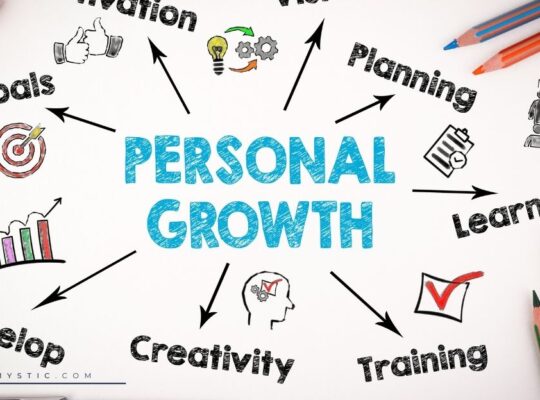How can you tell if your self-worth is healthy? Do you know whether you have good self-esteem or low self-esteem? What is self-worth anyway?
How do you measure your self-worth? And, what can you do to improve it when it’s low?
The Meaning Of Self-Esteem
Self-esteem, to give it a definition, is having confidence in your own worth or abilities. It is believing in yourself, having faith in yourself. It is a sense of your own self efficacy, an “I got this,” or an “I can do this,” kind of attitude.
It is self-respect, it is feeling good about yourself, it is loving yourself no matter what and it is having a sense of pride in yourself. Self-esteem is something that is established in early childhood and becomes fixed by the age of 10, according to self-esteem expert, Marilyn Sorensen of the Self-Esteem Institute. Counselling psychologist Elizabeth Morelle explains that as children, we base our measure of self-worth upon our evaluation of our experiences and our interactions with others.
If we grew up in a stable and loving environment, where positive encouragement, affirmation and affection were liberally given, we would tend to develop a stronger sense of belief in ourselves and our capacity than if we grew up in a home where we were constantly criticized, belittled, condemned and put-down.
This latter kind of parenting is guaranteed to make us feel uncertain about ourselves, to feel “less than” and not as good as. If our parents are more authoritarian and overly disciplinarian, we may develop an image of ourselves which says that we can never measure up, no matter how hard we try. We may grow up to be fearful and insecure, lacking confidence in ourselves and feeling full of self-doubt.
Chronically low self-esteem leads to all sorts of life debilitating conditions in adult life, Morelle continues: maybe we suffer from depression, anxiety or socio-phobia.
Maybe we long for a loving relationship but seem to always attract abusive partners into our life? Maybe we fail to reach our potential, or never seem to get that job promotion we are looking for.
Maybe we consistently suck at job interviews?
Maybe we turn to drugs or alcohol to numb the pain and shame of feeling worthless?
Maybe our feelings of unworthiness cause us to act out in ways we later regret, perhaps violence or even crime?
Low self-esteem is also related to the socio-economic environment we grew up in: A poor neighborhood with limited access to resources and poor quality of education, with parents stressed out and struggling to make ends meet, is going to impact our esteem differently than someone who grew up in a home with wealthy parents and access to the best of everything. Even then, there is no guarantee that your self-esteem is going to be healthy and intact.
Maybe you got bullied at school, for example, or maybe you still felt “less than” because you didn’t make it into the soccer team or you were never one of the cool kids. Whatever the reason, there are many things that can impact our self-esteem.
Behavior and Self-Esteem
One of the easiest and most obvious ways to gage your self-worth is too look at your behavior.
Low self-esteem can impact almost every facet of our lives, and it can really cause us to lead a stunted existence rather than flourishing and thriving. It can mean the difference between surviving and succeeding, living a life full of happiness and laughter and one of misery and isolation.
Look at your life and assess all its elements.
Are your relationships healthy and supportive of your happiness?
Are your friends people that make you happy and fulfill you?
Do the things you do in your life and the choices you make support your wellbeing?
Are you a pushover and a people pleaser, doing things you don’t want to do just because others want you to?
Are you living a life that makes you feel happy and fulfilled?
Do you cry often or ask why me?
All these things represent how you truly feel about yourself. When your esteem is low, it affects your behavior and your choices.
So, if you think your self-esteem can use a boost, what can you do?
There is good news in all of this, because there is a lot you can do to improve your sense of self-worth. But first, take this quiz to find out where you are on the “self-esteem spectrum.”
Self-Esteem Quiz
Answer the questions in the following two-part quiz:
Part 1
- Do you find it hard to say, “No”?
- Do you have boundary issues?
- Are you all work and no play?
- Do you take work home with you?
- Do you feel angry and resentful a lot of the time?
- Do you feel like other people take advantage of you at times?
- Do you put yourself at the bottom of the pile?
- Are you busy helping others so much that it affects your quality of life?
- Do you work for less pay than you know you are worth?
- Do you feel like others are better than you?
- Do you feel that you don’t deserve what other people have?
- Do you feel tired all the time?
- Do you comfort eat?
- Do you neglect your diet or your appearance?
- Do you keep people at a distance because if they knew the real you, they wouldn’t like you?
- Do you tend to isolate or withdraw?
Part 2
- Do you tend to get your way?
- Do you put your own needs first?
- Do you know where to draw the line?
- Do you keep a healthy work/play balance?
- Are you happy most of the time?
- Do you feel well connected to others socially?
- Do you feel well rewarded financially for the work that you do?
- Do you believe that you can “have it all”?
- Do you find that whatever you want just naturally seems to fall into your lap?
- Do you believe that you can accomplish anything you set your mind to?
- Do you feel confident?
- Do you believe in yourself?
Quiz Results
If you answer mainly “Yes” to Part 1 you have very low self-esteem.
If you answer mainly “Yes” in Part 2 you have good, healthy self-esteem.
About half and half means you have reasonable self-esteem but that you can still do some work to improve it.
Doing this quiz will give you a rough idea as to how healthy your self-esteem is at this time. Of course, there are people who have a strong sense of entitlement and who lack empathy and understanding of others, who are willing to do whatever it takes to get what they want.
This is not really healthy self-esteem. It is more likely to be narcissism or even sociopathy, and in fact is believed by some experts to mask chronically low self-esteem. But that is a whole other conversation.
Tools To Improve Self-Esteem
Morelle suggests the following tools can be really big change-makers in order to build a healthier self-image:
Thought Changing
Based on cognitive behavioral therapy (CBT), thought changing can be very powerful. CBT has been found in studies to be at least as effective as medication in reducing symptoms such as pain and negative mood in patients with fibromyalgia. Morelle has developed a procedure that uses somatic (or body) awareness to give a profound experience of the impact the thought is having on the body. Once you identify the physical sensations and emotions associated with the thought, you have greater ease in letting it go.
How-To: Thought Changing
- Identifywhat you believe to be true about your self-worth, for example, maybe you believe, “I’m not good enough.” We’ll use that as an example, but you could think lots of things like “I suck at this,” “I’m so ugly,” “I’m a failure,” and so on. Just work with the most powerful thought that comes up. The thought will have a negative connotation to it. A negative thought about yourself signals that low self-esteem will follow quickly on its heels. As you go through the process, other thoughts that need clearing will become clear to you. Take your thoughts one at a time and work on ONLY one thought at a time.
- Ask yourself, “Are you 100% sure this thought is even true?”
- How does it make you feel to think this thought? It is helpful to write all this down. For example, “I feel fearful, anxious, ashamed, unhappy, worried,” and so on.
- Notice where in your body you are holding the emotion. See if you can describe for yourself any physical sensations associated with the emotion. For example, maybe your hands tremble, your shoulders tense, your breathing becomes shallow, and so on.
- Ask, “Is there ONE good, positive reason to keep thinking a thought that makes you feel?
- Ask yourself, “Are you WILLING to let go of a thought that makes you feel?
- If you answered yes, then ask yourself, “Are you willing to let that thought go right now?
- If you said, yes to #7, then ask yourself, “What is a NEW thought, a higher thought, a positive thought, that feels really good to me and empowering, and exciting, that will replace the old negative, disempowering thought?
- Say the new thought out loud a few times and make sure it feels really good and empowering or uplifting; use this new thought to replace the old thought in case it ever comes up again.
- Once you have completed one thought/belief,move onto the next, most powerfully (negative) “charged” thought on your list or choose another symptom and ask yourself what you think/believe about it. Go back to #1 and repeat the process.
You will often find that by working on one thought and clearing it, many others, like dominoes, fall crashing down with the earlier thought and you won’t necessarily find you have to process every single thought.
It’s like finding a loose thread and pulling it and it pulls all the other threads/thoughts that are attached to that original negative thought along with it. The results can be pretty astonishing and far reaching.
- If you get stuck and find yourself saying, “NO, I’m not willing to let that thought go,” don’t worry, don’t stress. It just means there is another layer, a deeper, more highly charged thought/belief underneath the one you have first chosen to work with and so you need to work with that thought first. Ask yourself why you aren’t willing to let the thought go and write down the thoughts that come up. Work with the most powerful thought that now comes up and clear that. With practice this will become easier and easier, faster and faster.
12. RINSE AND REPEAT. Practice is the key!
Inner Smile Meditation
Taoist Master Mantak Chia uses the Inner Smile Meditation to develop self-love; he claims it is possible to generate more love. Indeed, studies show that meditation practices similar to these (such as loving kindness meditation, another great tool for increasing self-esteem) can lower blood pressure, decrease heart rate, increase feelings of happiness and induce relaxation. Here’s how to do the inner smile meditation:
- Take a moment to sit comfortably and just breathe. Breath in and out; just observe your breath. Don’t try to change anything.
- Picture an all-loving presence surrounding you. Feel its loving gaze upon your face and upon your eyes. Let your eyes soak in the feeling of kindness, acceptance and approval that is being directed towards you. Feel your eyes soften and relax as they are bathed in this loving energy.
- See this loving energy as a golden light that floods your brain with nourishing harmony and love. Imagine the brain bathing in this peaceful healing light of love. Imagine the brain is suspended and resting in this energy as though it were floating effortlessly in a fluid.
- Imagine the healing energy of love start to spread throughout your entire body, bathing each of your internal organs with a wonderful golden light. Picture each one to the best of your ability. See each one receiving healing, loving energy.
- Eventually picture your entire body radiant in the glow of this magnificent loving energy. Rest here as long as you can.
Notice how your inner state has transformed. Tell yourself a positive statement such as “I am worthy of love,” or “I am loveable exactly as I am.”
The above meditation is one of the most foundational practices for developing self-love, or self-esteem, and confidence. As Master Chia himself says, “Love heals.”
Morelle says that this, combined with the practice of changing negative thoughts as they arise can be very health giving. “It is an investment of time that is well worth the effort,” she says. Morelle goes on to say that there are many ways to build up self-esteem. The following can also be very helpful, she says, and there is plenty of science to back them up.
Tapping
Tapping, also known as Emotional Freedom Technique, or EFT, was developed by Gary Craig and uses points from the Chinese meridian energy system. Tapping on a certain sequence of acupressure points appears to release the energetic blockages associated with the limiting beliefs.
No one really knows how or why this works, but many people swear that it does! Many scientific studies have been done which show that it does indeed work. Even if there is no real understanding as to why it works, the fact is, it does! It certainly interrupts the unhelpful thought and stops you from continuing to think it.
How-To Do Tapping To Improve Your Self-Worth
- Imagine the unhelpful thought that you have is, “I am worthless.”
- Rate the strength of the belief, in terms of how badly it is making you feel, on a scale of 0 to 10, where 0 is, you are not actually having the thought, and 10 is, the thought is deeply affecting you. Say you rate the strength of your belief at a 9.
- Tap the outside edge of your right hand, with the side of your left hand; say to yourself, “Even though I believe I am worthless, I unconditionally love and accept myself.” Repeat this three times.
- Now you are going to tap various points in a set sequence, using a “reminder phrase.” In this scenario, your reminder phrase would simply be, “This worthlessness.”
- Tap the top of your head, while saying the words, “This worthlessness.” You only need to tap three or four times, whilst you say the words.
- Repeat this procedure at the following points:
- The inside corner of one eyebrow
- The outside of the eye, on the same side.
- Underneath the mid-point of the eye on the same side.
- The fulcrum, that is, the point below the nose and above the upper lip.
- The middle of the chin.
- The point just under the inside edge of the clavicle bone, where it meets the sternum.
- Finally, on the same side, tap about four inches under the armpit, in the midline of your side ribs (on women, this is the bra strap area).
- Now, rate yourself again. Has the rating gone down? Frequently you will find it goes down by one or two points. You can then repeat the exercise and rate yourself again. It will often keep going down. Repeat the exercise until you have got the rating down to one or even zero. At this point the thought will have lost its charge; it will no longer hold power over you.
Yoga Nidra
Yoga Nidra means “yogic sleep.” It is the state between waking and sleeping during which the subconscious mind becomes very susceptible to suggestion, and thus reprogramming of the mind can take place in this state. In yoga nidra you use a positive affirmation to suggest to the mind how you would like to be.
You can use yoga nidra to change feelings of low self-worth. You might choose a phrase like “I love and accept myself for the magnificent being that I truly am.” Or, “I am great and can accomplish anything I want.” Or, “I am a perfectly lovable human being and I deserve a loving relationship.”
Final Thoughts
So, in order to measure your self-esteem, you need to look closely at your life and your behaviors.
Are you happy?
Are you in a job you love, getting paid the money you know you are worth?
Or, perhaps you don’t think you are really worth that much at all?
Do you have a loving relationship or are you afraid of commitment?
Are you constantly putting up with other’s bad behavior because deep down you believe no one else could ever really love you?
Do you act out without knowing why?
Do you hate your body? Do you hate yourself?
Are you anxious or depressed, perhaps for no apparent reason? If any of this resonates with you, then you probably have low self-esteem. But don’t despair, there is a lot you can do to build it up, feel better about yourself and improve the overall quality of your life.
With consistent practice and commitment, you can use the discipline of thought changing to overcome negative and limiting beliefs that keep you stuck in old patterns of poor self-esteem. Once you realize that these beliefs no longer serve you, but are merely hold you back, it becomes easy to let them go.
The inner smile meditation is a wonderful way to build up feel good emotions inside yourself, as well as changing your internal physiology for the better. It helps you develop self-love.
Tapping is an effective tool for altering your emotional states. So, if you are feeling depressed or anxious due to feelings that you are unworthy, you can move from these negative and unwanted feelings into more positive states where you can experience more happiness, joy, self-confidence, satisfaction and self-belief.
Yoga nidra is a state of deep relaxation where you are really aware of the sleep state, and yet you remain awake. In this state your subconscious mind is very receptive to suggestion and this is the perfect time to place a positive affirmation about your self-worth into the mind.
If you feel that you need help to move out of a stuck place of low self-worth, it is a good idea to see a trained professional. Reaching out in this way is in itself a sign of self-esteem: You know you are worthy of the support and you respect yourself enough to go and get it for yourself.







